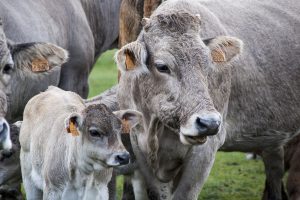 Converting your farm operations from conventional milking processes to robotic milking processes is important for the long-term success of your business. However, experts at Fullwood Packo advise you need careful planning and detailed execution of the plans to complete the transition. You must work hard and take a methodic approach during the execution process.
Converting your farm operations from conventional milking processes to robotic milking processes is important for the long-term success of your business. However, experts at Fullwood Packo advise you need careful planning and detailed execution of the plans to complete the transition. You must work hard and take a methodic approach during the execution process.
You must be keen to avoid negative impacts on the plant workers and the cows by negating undesirable events and outcomes. Taking this approach will enable you to enjoy the features and benefits of robotic milking technology.
Transitioning to Robotic Milking
All things considered, not all dairy farms begin the transition from the same place. Statistics indicate that 60% of the robotic milking systems are installed new while the other 40% retrofit the system into the farm. In a retrofit scenario, cows remain in that particular environment throughout the process.
These scenarios are different and call for different transition processes and management strategies. Setting up a new system has the potential for inducing greater negative effects on the herd during the transitioning process owing to the extensive changes in the environment. To avert such a crisis, dairy farms can house the animals in a new/different barn whilst utilising the existing convectional milking parlour.
Another important consideration is to transition from conventional to robotic milking gradually. A smooth and gradual transition process will induce lower stress levels. It helps the cow retain a familiar environment. Generally, retrofits installations, thereby preserving a familiar environment, negates the impact of milk output.
The transition period consists of three stages:
- 6 months before startup;
- The startup;
- 6 months after startup.
The First Phase
In this read, we will delve into the first phase, namely the 6 months before the startup.
In many regards, this is the most critical stage of the entire process. It is a period wherein all the transitioning plans and strategies are drawn and defined. Unfortunately, many dairy farm owners and managers underestimate this stage. However, underestimating or ignoring critical decision-making or details associated with the startup planning results in delayed, inefficient, or stressed transiting.
Transitioning into a robotic milking system requires incorporating new skills into your farm, particularly with regards to herd management and the technology. You ought to recognise the strengths and weaknesses within your management and labour force team as you prepare to meet the new challenge.
Farms that have already been using advanced heard management software are better prepared for the impending changes. On the other hand, if you have little to no experience and knowledge in using herd management software, you should schedule some time classes for your team.
While you do not need software engineering in your team, but you need your team to have a basic understanding of using the software. Over time, your team will gain the much-needed experience.
Sources of Knowledge
Touring other dairy farms is common among dairy farmers, especially those interested in learning about new technology such as robotic milking. One way to learn about robotic milking and the best practices to deploy is to visit other farms. Make a point of networking with other farmers with a key objective of benchmarking your success against what your peers are doing.
Additionally, seek knowledge from all quarters. Beyond learning in classes, reading materials, and much more, consider attending webinars, engaging in social media communities, and making use of virtual libraries. Use many learning strategies and invite your team members (and external advisers) to enhance their knowledge.
When it comes to selecting cows for robotic milking system, you should consider the 3 primary considerations:
- The feet and legs;
- Udder health;
- Udder conformation.
While implementing robotic milking, shaving as much time during the milking process is essential. Being able to attach as fast and accurately as possible is crucial for both the system performance as well as cow health. To this end, avoid cows with rear-crossed teats and opt for centrally placed teats.
Proper balancing of the teat placements and udder cleft will positively impact your cow longevity. Once you define the group of cows, the main objective should be to ensure every animal using the robotic milking facilities is free of contagious pathogens.
This might prove challenging keeping in mind the group dynamics and management make segregation of infected cows a daunting task when compared to using a conventional milking system. Farmers are advised to run monthly bulk tank cultures and monitor the cows individually.